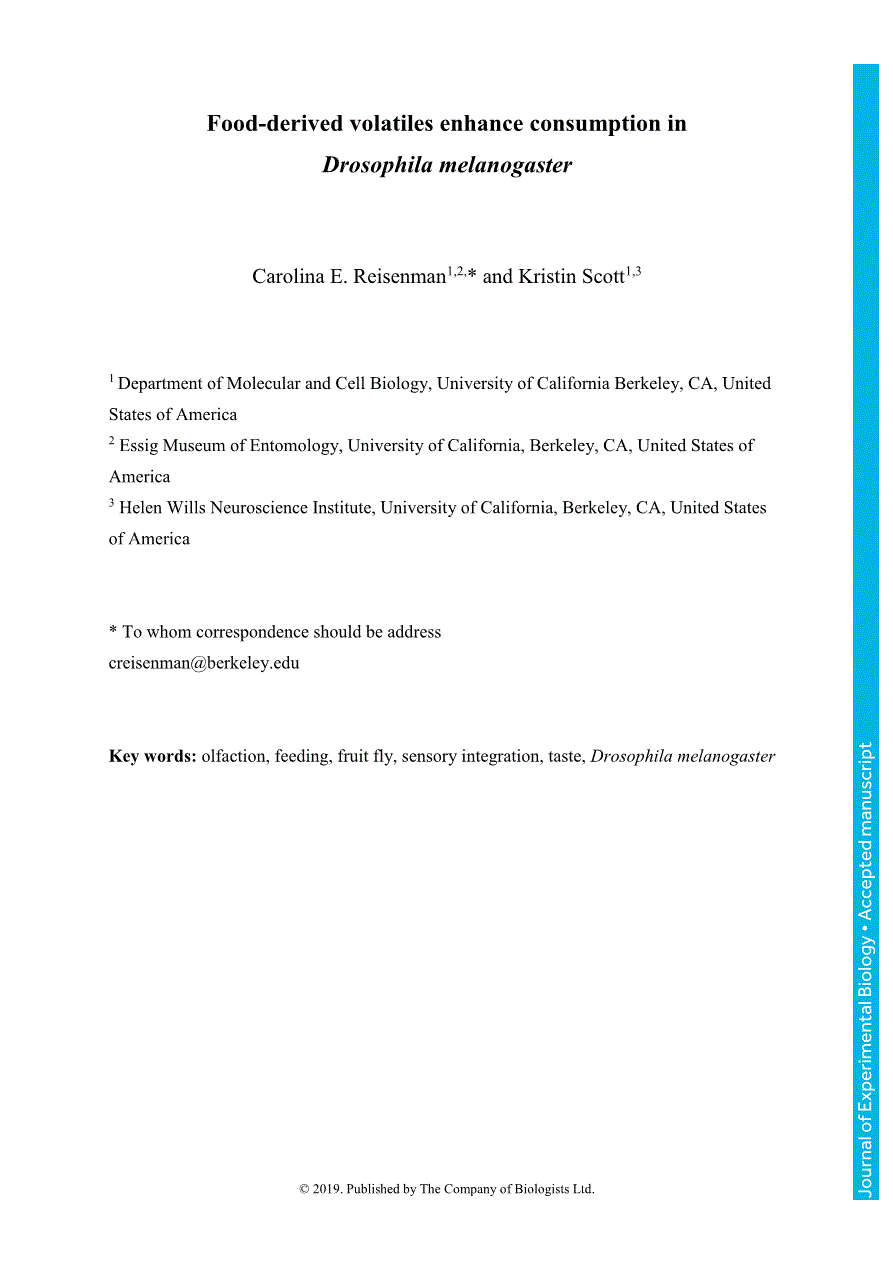Insects use multiple sensory modalities when searching for and accepting a food source, in particular odor and taste cues. Food-derived odorants are generally involved in mediating long-and short-range attraction. Taste cues, on the other hand, act directly by contact with the food source, promoting the ingestion of nutritious food and the avoidance of toxic substances. It is possible, however, that insects integrate information from these sensory modalities during the process of feeding itself. Here, using a simple feeding assay, we investigated whether odors modulate food consumption in the fruit fly Drosophila melanogaster. We found that the presence of both single food-derived odorants and complex odor mixtures enhanced consumption of an appetitive food. Feeding enhancement depended on the concentration and the chemical identity of the odorant. Volatile cues alone were sufficient to mediate this effect, as feeding was also increased when animals were prevented from contacting the odor source. Both males and females, including virgin females, increased ingestion in the presence of food-derived volatiles. Moreover, the presence of food-derived odorants significantly increased the consumption of food mixtures containing aversive bitter compounds, suggesting that flies integrate diverse olfactory and gustatory cues to guide feeding decisions, including in situations in which animals are confronted with stimuli of opposite valence. Overall, these results show that food-derived olfactory cues directly modulate feeding in D. melanogaster, enhancing ingestion.
Food-derived volatiles enhance consumption in Drosophila melanogaster
Currently Viewing Accepted Manuscript - Newer Version Available
- Split-screen
- Views Icon Views
- Open the PDF for in another window
-
Article Versions Icon
Versions
- Version of Record 29 May 2019
- Accepted Manuscript 01 January 2019
- Share Icon Share
-
Tools Icon
Tools
- Search Site
Carolina E. Reisenman, Kristin Scott; Food-derived volatiles enhance consumption in Drosophila melanogaster. J Exp Biol 2019; jeb.202762. doi: https://doi.org/10.1242/jeb.202762
Download citation file:
Advertisement
2023 JEB Outstanding Paper Prize shortlist and winner

The JEB Editors are delighted to announce the shortlisted authors for the 2023 JEB Outstanding Paper Prize. Read the winning paper - Tiny spies: mosquito antennae are sensitive sensors for eavesdropping on frog calls - by Hoover Pantoja-Sanchez and Brian Leavell from Ximena Bernal's lab at Purdue University, USA.
JEB Science Communication Workshop for ECRs

If you’re an early-career researcher interested in science communication and are attending the SEB Annual Conference in Prague this summer, come a day early and join the JEB Editors at a sci comm workshop to learn the key writing skills needed to promote your research to a broad audience beyond your peers (1 July at 14.30-17.30). Places are limited to 24 attendees, and applicants should apply through the SEB registration page by 30 April 2024.
Bridging the gap between controlled conditions and natural habitats in understanding behaviour

Novel technologies enable behavioural experiments with non-model species, in naturalistic habitats and with underexplored behaviours. In their Commentary, Scholz and colleagues discuss how to obtain a deeper understanding of the natural ecology and lifestyle of study animals.
Beluga metabolic measures could help save species

To help save animals from extinction, it’s important to understand what each species needs to survive. This led Jason John et al. to measure the metabolic rates of captive belugas to develop a ‘fish calculator’ showing that the whales need to eat ~23 salmon per day.
ECR Workshop on Positive Peer Review

Are you an ECR looking for tips on how to write concise, astute and useful manuscript reviews? If so, join the JEB Editors at a 2-hour JEB-sponsored Workshop on Positive Peer Review at the Canadian Society of Zoologists annual meeting in Moncton on 9 May 2024 at 13.00-15.00. There are 25 spaces for ECRs and selection is first come, first serve. To sign up, check the ECR Workshop box when you register for the CSZ meeting.



